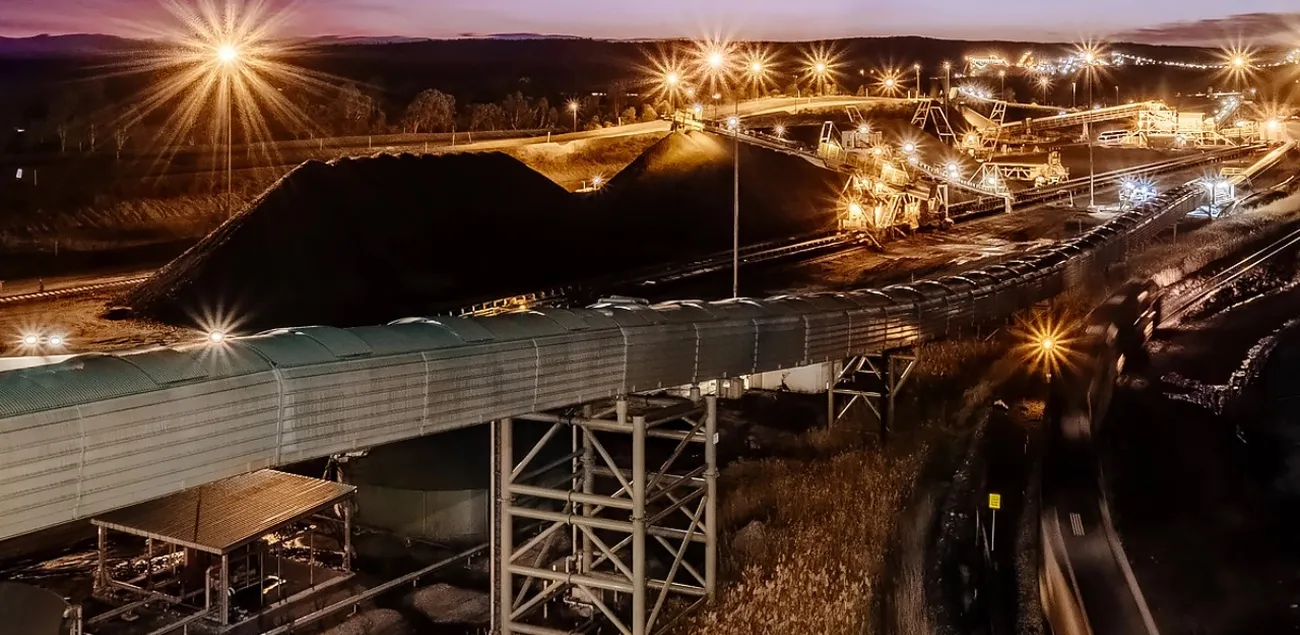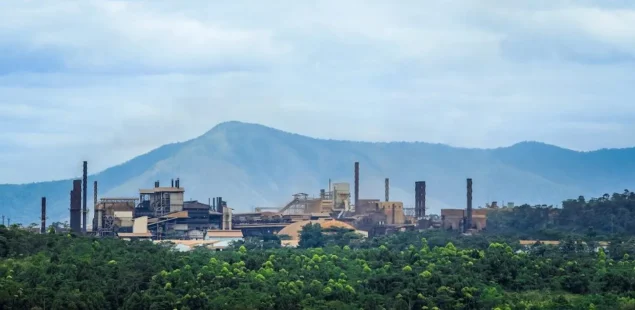
Western metal smelting operations across copper, zinc, aluminum, and nickel face an unprecedented crisis as Chinese capacity expansion drives treatment charges to historic lows and forces facility closures worldwide. The crisis extends beyond individual company struggles to threaten Western industrial sovereignty, with China approaching the same level of processing dominance in base metals that has enabled export restrictions on critical minerals including gallium, germanium, and antimony.
Treatment Charges Collapse Creates Market Inversion
The copper smelting industry has experienced a complete inversion of traditional economics, with Chinese smelters agreed to zero treatment charges in June 2025 negotiations with Chilean miner Antofagasta, while spot market conditions have forced smelters to pay miners for concentrate rather than receiving processing fees. This represents a fundamental breakdown of the industry’s revenue model, where treatment and refining charges traditionally provide the primary income stream for processing facilities.
Zinc smelting has followed a similar trajectory, with treatment charges falling into negative territory during the fourth quarter of 2024 before recovering to $30-50 per metric ton, still significantly below the $80 benchmark that itself represented the lowest annual charge in over 50 years. Chinese zinc concentrate imports totaled 2.204 million tons in the first five months of 2025, up 52.46% year-over-year, despite global mine production increasing 5.1% year-over-year through April.
The market distortion reflects Chinese smelting capacity expansion that exceeds global mine supply capabilities, creating artificial scarcity in processing availability while abundant raw materials remain available. Benchmark Mineral Intelligence estimates a global copper concentrate deficit of 1.1 million tons in 2025, expanding to 2.6 million tons as Chinese smelting capacity continues growing at 10% annually.
Western Facility Closures Accelerate Under Pressure
Multiple Western smelting operations have succumbed to unsustainable economics, with various facilities entering care and maintenance status. These closures highlight the geographic concentration of viable operations in China, where state support and vertical integration enable continued operations despite negative processing margins.
Glencore’s Mount Isa copper smelter in Australia faces imminent closure without government intervention, with company officials describing the operation as “unviable” under current market conditions. The facility’s closure would eliminate over half of Queensland’s sulfuric acid supply while affecting 500 direct jobs and substantial indirect employment throughout the regional supply chain.
Nyrstar’s zinc and lead smelters at Port Pirie and Hobart similarly require government support to maintain operations, with parent company Trafigura describing the facilities as “uneconomical” and “under review” for potential sale. The operations represent critical infrastructure for Australia’s critical minerals strategy, capable of producing antimony, bismuth, tellurium, germanium, and indium as byproducts.
Chinese Market Dominance Reaches Strategic Levels
China has significantly expanded its share of global refined zinc production, while the country controls approximately 60% of primary aluminum output following years of aggressive capacity expansion. Chinese aluminum exports have increased to 6.2 million tons in 2024, prompting government capacity caps of 45 million tons annually that have simply redirected investment to Indonesian facilities.
The nickel sector demonstrates the most dramatic transformation, with Chinese investment in Indonesian processing facilities enabling the Southeast Asian nation to capture approximately 50% of global production. This Sino-Indonesian supply surge has crushed nickel prices and forced substantial Western capacity to close since 2020, creating overcapacity throughout the processing chain according to industry analysis.
Chinese smelting capacity expansion continues despite negative treatment charges, with copper refining capacity projected to grow 10% in 2025 to reach 12.78 million tons annually. This expansion occurs through state-supported investment that enables operations during loss-making periods while Western competitors face shareholder pressure for immediate profitability.
Energy Costs Compound Competitive Disadvantages
Western smelters face energy costs three to four times higher than Chinese competitors, creating structural disadvantages that government subsidies cannot easily address. European facilities have been particularly affected since energy prices spiked following Russia’s invasion of Ukraine in 2022, with multiple aluminum and zinc plants closing due to unsustainable power costs.
The European Union has implemented an “Action Plan” prioritizing faster grid access for energy-intensive sectors and promoting power purchase agreements to alleviate costs, though the effectiveness remains uncertain. Competition with data centers and other power-hungry technology sectors further constrains electricity availability for industrial users requiring consistent baseload power.
Chinese smelters benefit from integrated operations that can offset processing losses through downstream manufacturing margins, while state support at both central and provincial levels provides additional financial cushioning during market downturns. This combination of advantages creates an unlevel playing field that market forces alone cannot address.
Strategic Implications Extend Beyond Economics
Western smelters represent strategic assets beyond their economic contribution, serving as critical links in supply chains from mine to finished product while offering byproduct recovery potential for materials subject to Chinese export restrictions. Rio Tinto’s Kennecott copper smelter in Utah now produces tellurium, while Nyrstar’s Port Pirie facility could generate antimony, both classified as critical minerals under export controls.
The aluminum smelting process enables gallium recovery, a semiconductor metal affected by Chinese export restrictions that has created supply security concerns for Western technology and defense industries. These byproduct capabilities become increasingly valuable as China demonstrates willingness to weaponize critical mineral exports for geopolitical leverage.
The crisis parallels China’s dominance in rare earth processing, where control over intermediate processing stages provides strategic influence despite limited mining market share. Western governments face decisions about financial support levels required to maintain domestic processing capabilities essential for industrial sovereignty and supply chain security.
Government Response Determines Industry Survival
Australian federal and Queensland state officials have engaged in high-level negotiations with Glencore regarding Mount Isa smelter support, acknowledging that closure would damage sovereign capability and downstream supply chains. However, specific assistance measures remain undisclosed, while company requests for support to maintain operations that underpin regional economic activity continue under review.
The Australian government’s response to Nyrstar’s situation will similarly determine whether the country retains multi-metals processing capabilities essential for critical minerals production. The facilities’ ability to produce five registered critical minerals creates national security implications beyond immediate economic considerations.
European initiatives including faster grid access and power purchase agreements represent initial steps toward addressing energy cost disadvantages, though the scale of intervention required to match Chinese state support remains unclear. The effectiveness of these measures will determine whether Western processing capacity can survive the current margin compression cycle.
Market Outlook Suggests Prolonged Pressure
Industry analysts project continued pressure on Western smelting operations as Chinese capacity expansion outpaces global mine supply growth, maintaining the fundamental imbalance driving negative treatment charges. The copper concentrate deficit is expected to widen through 2025, though this scarcity benefits miners rather than processors under current market dynamics.
Zinc market conditions show limited improvement prospects, with Chinese import demand remaining strong despite domestic overcapacity concerns. The combination of expanding Chinese processing capability and constrained Western operations suggests continued market share consolidation favoring state-supported facilities.
The crisis represents a strategic inflection point for Western industrial policy, requiring decisions about the level of government intervention necessary to maintain domestic processing capabilities. Without coordinated response, the metals processing industry faces the same fate as rare earth refining, where Chinese dominance enables export restrictions that threaten Western industrial security.
Company Background and Market Context
Glencore operates as one of the world’s largest diversified mining and trading companies, with the Mount Isa complex representing a cornerstone asset in its Australian portfolio since acquisition in the 1990s. The facility’s historical significance extends to its role as a regional economic anchor and critical infrastructure supporting broader mining development across northwest Queensland.
The global copper smelting industry serves essential functions in converting mined concentrates into refined metal for manufacturing applications, with processing capacity concentrated in China, Japan, Chile, and historically significant operations in Australia and Europe. Market dynamics reflect the intersection of resource nationalism, industrial policy, and competitive economics that increasingly favor state-supported operations over private facilities in high-cost jurisdictions.
Australia’s critical minerals sector faces fundamental challenges balancing economic competitiveness with strategic objectives for domestic processing capacity, while government policy struggles to address structural disadvantages that threaten existing operations essential for supply chain security and regional economic stability.



